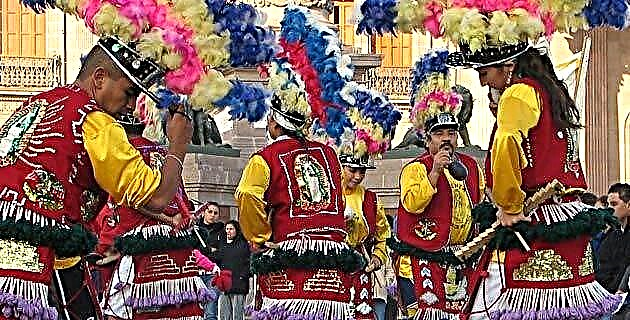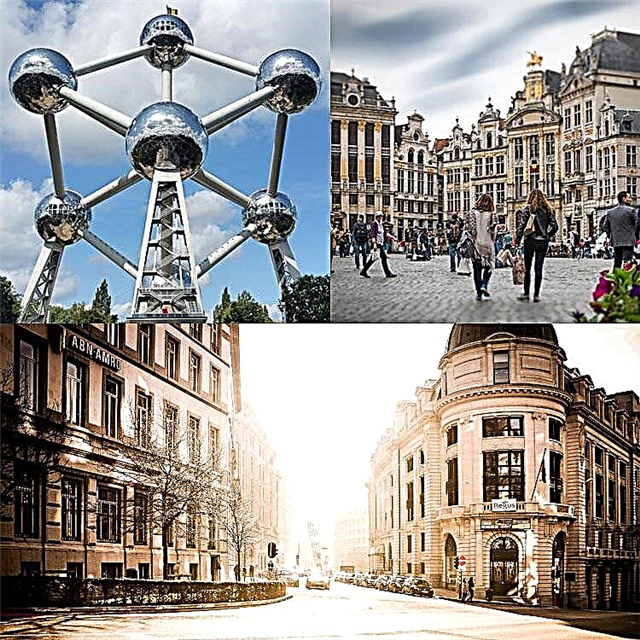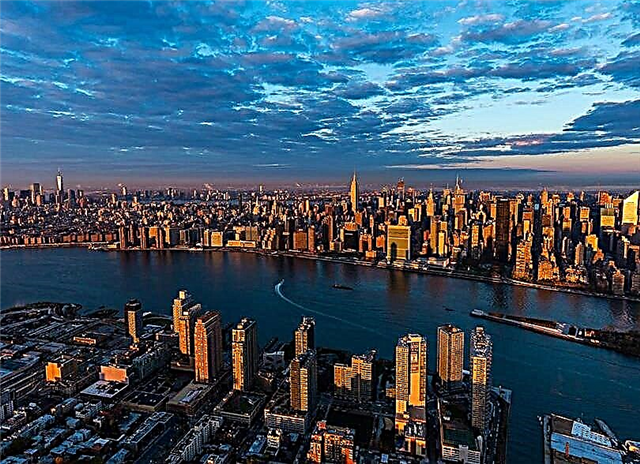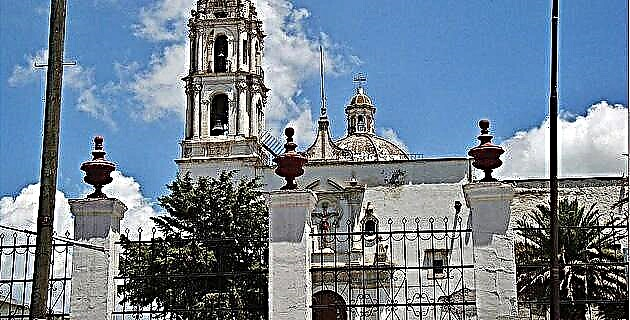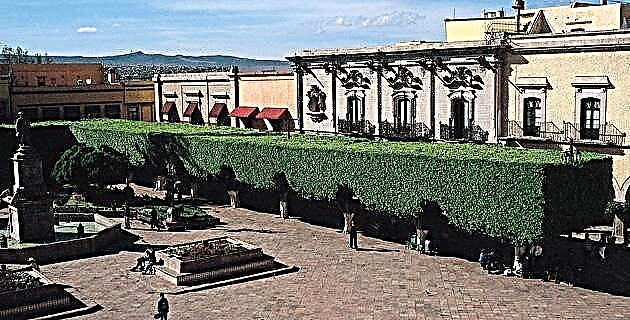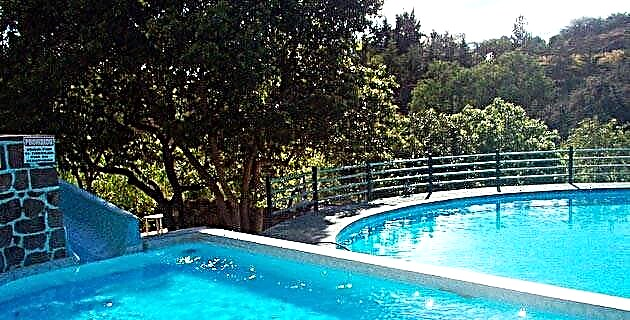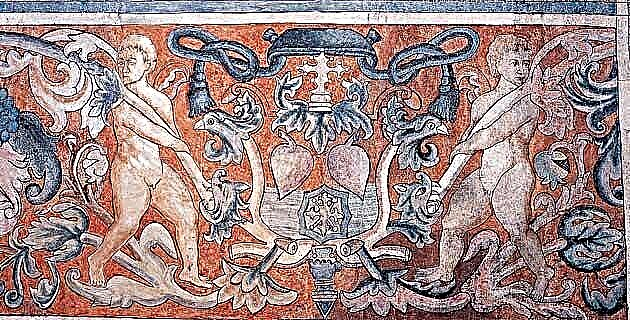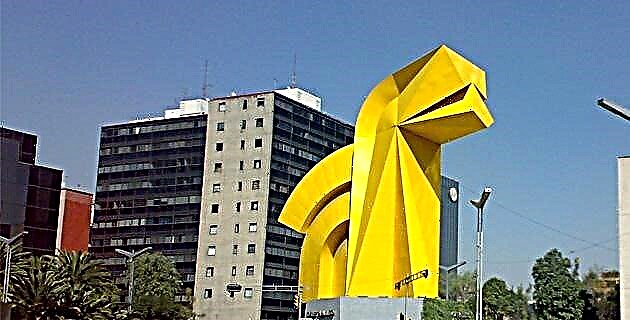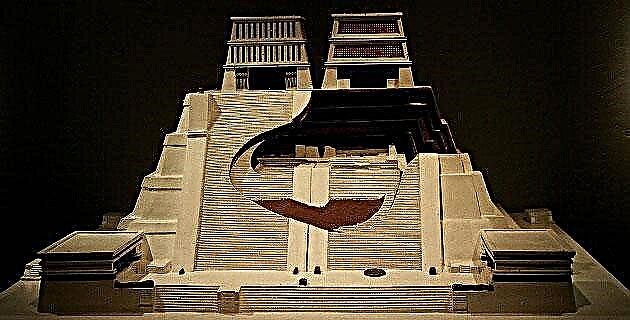
As its name indicates: Huey teocalli, Templo Mayor, this building was the tallest and the largest in the entire ceremonial site. It contained within itself a symbolic charge of great relevance, as we will see below.
To begin with, we have to go back centuries, to the moment when Tezozomoc, lord of Azcapotzalco, allowed the Aztecs to settle in a sector of Lake Texcoco. What Tezozomoc was looking for was nothing else but that, by providing protection and allocating lands for the Mexica, they would have to help as mercenaries in the wars of expansion of the Tepanecas of Azcapotzalco, in addition to paying a tribute in various products, thus remaining under the control of the flourishing Tepanec empire, which at that time was subject to various regions and cities around the lake.
Despite this historical reality, the myth gives us a glorified version of the founding of Tenochtitlan. According to this, the Aztecs were to settle in the place where they saw an eagle (a solar symbol related to Huitzilopochtli) standing on a nopal. According to Durán, what the eagle devoured were birds, but other versions speak only of the eagle standing on the tunal, as can be seen in plate 1 of the Mendocino Codex, or in the magnificent sculpture known as "Teocalli de la Guerra Sagrada", today exhibited in the National Museum of Anthropology, on the back of which you can see that what comes out of the bird's beak is the symbol of war, the atlachinolli, two streams, one of water and the other of blood, which could well be mistaken for a snake .
THE CREATION OF THE FIRST TEMPLE
In his work, Fray Diego Durán tells us how the Aztecs reached the shores of Lake Texcoco and looked for the signs that their god Huitzilopochtli had indicated to them. Here is something interesting: the first thing they see is a stream of water that gushes between two rocks; next to it are white willows, junipers and reeds, while frogs, snakes and fish come out of the water, all white too. The priests are happy, because they have found one of the signs that their god gave them. The next day they return to the same place and find the eagle standing on the tunnel. The story goes like this: they went forward to look for the eagle's forecast, and walking from one part to another they devised the tunal and above it the eagle with its wings extended towards the rays of the sun, taking in its heat and the freshness of the morning, and on his nails he had a very handsome bird with very precious and resplendent feathers.
Let's stop for a moment to explain something about this myth. In many parts of the world, ancient societies establish a series of symbols related to the founding of their city. What drives them to do so is the need to legitimize their presence on Earth. In the case of the Aztecs, they mark very well the symbols that they see the first day and that are associated with the color white (plants and animals) and with the stream of water, and separate them from the symbols that they will see the next day ( tunal, eagle, etc.). Well, the first symbols observed already appear in the sacred city of Cholula, if we pay attention to what the Toltec-Chichimeca History tells us, that is, they are symbols that are associated with the Toltecs, a people before the Aztecs who, for them , was the prototype of human greatness. In this way they legitimize their relationship or their descendants - real or fictitious - with that people. The later symbols of the eagle and the tunal are directly related to the Aztecs. The eagle, as said, represents the Sun, as it is the bird that flies the highest and, therefore, it is associated with Huitzilopochtli. Let us remember that the tunal grows on the stone in which the heart of Copil, Huitzilopochtli's enemy, had been thrown after being defeated by him. This is how the presence of the god is legitimized to locate the site where the city will be founded.
It is necessary to refer here to another important matter: the date of the founding of the city. We have always been told that this occurred in AD 1325. Several sources repeat it insistently. But it turns out that archaeoastronomy studies have shown that a solar eclipse occurred in that year, which would lead the Aztec priests to adjust the date of the foundation to relate it to such an important celestial event. It should not be forgotten that the eclipse in pre-Hispanic Mexico was clothed with particular symbolism. It was the clearest demonstration of the struggle between the Sun and the Moon, from which myths such as the combat between Huitzilopochtli and Coyolxauhqui originate, the first with its solar character and the second of lunar nature, where the Sun rises triumphant every morning, when It is born from the earth and dispels the darkness of the night with its weapon, the xiuhcóatl or fire serpent, which is nothing other than the solar ray.
Once the Aztecs find or are assigned the place they can occupy, Durán relates that the first thing they do is build the temple for their god. Thus says the Dominican:
Let's all go and make in that place of the tunnel a small hermitage where our god now rests: since it is not made of stone, it is made of lawns and walls, because at present nothing else can be done. Then all with great will went to the place of the tunnel and cutting thick lawns of those reeds next to the same tunnel, they made a square seat, which was to serve as the foundation or seat of the hermitage for the rest of their god; And so they built a poor and small house on top of him, like a humiliating place, covered with straw like the one they drank from the same water, because they couldn't take it anymore.
It is interesting to note what happens next: Huitzilopochtli orders them to build the city with their temple as the center. The story continues like this: "Tell the Mexican congregation that the gentlemen each one with their relatives, friends, and associates divide into four main neighborhoods, taking in the middle the house that you have built for my rest."
The sacred space is thus established and around it the one that will serve as a room for men. Furthermore, these neighborhoods are built according to the four universal directions.
From that first shrine made with simple materials, the temple will reach enormous proportions, after the same temple will incorporate Tlaloc, the god of water, together with the god of war, Huitzilopochtli. Next, let's see the construction stages that archeology has detected, as well as the main characteristics of the building. Let's start with the latter.
In general terms, the Templo Mayor was a structure oriented towards the west, towards where the Sun falls. It sat on a general platform that we think represented the earthly level. Its staircase ran from north to south and was made in a single section, because when going up to the platform there were two stairs that led to the upper part of the building, formed in turn by four superimposed bodies. In the upper part there were two shrines, one dedicated to Huitzilopochtli, sun god and god of war, and the other to Tlaloc, god of rain and fertility. The Aztecs took good care to perfectly differentiate each half of the building according to the god to which it was dedicated. The Huitzilopochtli part occupied the southern half of the building, while the Tláloc part was on the north side. In some of the construction stages, projection stones are seen that line the bodies of the general basement on the side of the god of war, while that of Tláloc has a molding in the upper part of each body. The snakes whose heads rest on the general platform differ from each other: those on the side of Tláloc are apparently rattlesnakes, and those of Huitzilopochtli are "four noses" or nauyacas. The shrines in the upper part were painted in different colors: Huitzilopochtli's with red and black and Tláloc's with blue and white. The same happened with the battlements that finished off the upper part of the shrines, in addition to the element that was located in front of the entrance or door: on the Huitzilopochtli side a sacrificial stone was found, and on the other side a polychrome chac mool. Furthermore, it has been seen that in certain stages the side of the god of war was a little larger than that of its counterpart, which is also noted in the Codex Telleriano-Remensis, although in the corresponding plate there was an error of investment of the temple.
Stage II (around 1390 AD). This construction stage is characterized by its very good state of conservation. The two shrines of the upper part were excavated. In front of the access to Huitzilopochtli, the sacrificial stone was found, consisting of a block of tezontle well established on the floor; under the stone was an offering of razor clams and green beads. Several offerings were detected under the floor of the shrine, including two funeral urns containing burned human skeletal remains (offerings 34 and 39). Apparently it is the remains of some personage of the highest hierarchy, because they were accompanied by golden bells and the place where the offerings were occupied was exactly in the middle of the shrine, at the foot of the bench where the statue must have been placed. figure of the warrior god. A glyph 2 Rabbit located on the last step and in axis with the sacrificial stone indicates, approximately, the date assigned to this construction stage, which suggests that the Aztecs were still under the control of Azcapotzalco. The Tlaloc side was also found to be in good condition; on the access pillars to its interior we see mural painting both on the outside and on the inside of the room. This stage must have been about 15 meters high, although it could not be excavated in its lower part, since the groundwater level prevented it.
Stage III (around 1431 AD). This stage had considerable growth on all four sides of the temple and completely covered the previous stage. The date corresponds to a glyph 4 Caña that is in the posterior part of the basement and that indicates, by the way, that the Aztecs had freed themselves from the yoke of Azcapotzalco, which happened in the year 1428, under the government of Itzcóatl, therefore that now the Tepanecs were the tributaries, hence the temple acquired great proportions. Leaning on the steps leading to the Huitzilopochtli shrine, eight sculptures were found, possibly of warriors, which in some cases cover their chests with their hands, while others have a small cavity in the chest, where green stone beads were discovered. , which mean hearts. We think that it is the Huitznahuas, or southern warriors, who fight against Huitzilopochtli, as the myth relates. Three stone sculptures also appeared on the Tláloc staircase, one of them representing a serpent, from whose jaws a human face emerges. In total, thirteen offerings associated with this stage were found. Some contain remains of marine fauna, which means that the Mexica expansion towards the coast has begun.
Stages IV and IVa (around AD 1454). These stages are attributed to Moctezuma I, who governed Tenochtitlan between 1440 and 1469. The materials from the offerings found there, as well as the motifs that decorate the building, indicate that the empire is in full expansion. Of the latter, we must highlight the snake heads and the two braziers that flank them, which were located towards the middle part of the north and south facades and at the back of the platform. Stage IVa is only an extension of the main facade. In general, the excavated offerings show remains of fish, shells, snails and corals, and pieces from other sites, such as those in the Mezcala style, Guerrero, and the Mixtec “penates” from Oaxaca, which tells us about the expansion of the empire towards those regions.
Stage IVb (1469 AD). It is an extension of the main facade, attributed to Axayácatl (1469-1481 AD). The most significant architectural remains correspond to the general platform, because of the two stairways that lead to the shrines, there were barely a few steps left. Among the outstanding pieces of this stage are the monumental sculpture of Coyolxauhqui, located on the platform and in the middle of the first step on the Huitzilopochtli side. Various offerings were found around the goddess. It should be noted two orange clay funeral urns that contained burned bones and some other objects. Studies of the skeletal remains indicated that they are male, perhaps high-ranking military personnel wounded and killed in the war against Michoacán, since we must not forget that Axayácatl suffered a painful defeat against the Tarascans. Other elements present on the platform are the four serpent heads that are part of the stairs that lead to the upper part of the building. Two frame the Tláloc staircase and the other two that of Huitzilopochtli, the ones on each side being different. Also important are the two huge snakes with undulating bodies that are at the ends of the platform and that can measure about 7 meters in length. At the ends there are also rooms with marble floors for certain ceremonies. A small altar called “Altar de las Ranas”, located on the Tláloc side, interrupts the staircase that leads from the great plaza to the platform.
The greatest number of offerings was found at this stage, under the platform floor; This tells us about the heyday of Tenochtitlan and the number of tributaries under its control. The Templo Mayor grew in size and magnificence and was a reflection of Aztec power in other regions.
Stage V (approximately 1482 AD). Little is what remains of this stage, only a part of the great platform on which the temple stood. Perhaps the most important thing is a group found north of the Templo Mayor that we call “Recinto de las Águilas” or “de los Guerreros Águila”. It consists of an L-shaped hall with remains of pillars and benches decorated with polychrome warriors. On the sidewalks, two superb clay figures representing eagle warriors were found at the door that faces west, and on another door two sculptures of the same material, by Mictlantecuhtli, lord of the underworld. The complex has rooms, corridors and interior patios; At the entrance to a corridor, two skeleton figures made of clay were found on the stool. This stage is attributed to Tízoc (1481-1486 AD).
Stage VI (around 1486 AD). Ahuízotl ruled between 1486 and 1502. This stage can be attributed to him, which covered the four sides of the temple. We must highlight the shrines that were made next to the Templo Mayor; These are the so-called "Red Temples", whose main facades face east. They are found on both sides of the temple and still retain the original colors with which they were painted, in which red predominates. They have a lobby decorated with stone rings of the same color. On the north side of the Templo Mayor, two more shrines were located, aligned with the Red Temple on that side: one decorated with stone skulls and the other facing west. The first is particularly interesting, as it is in the middle of the other two, and because it is decorated with about 240 skulls, it may well indicate the north direction of the universe, the direction of cold and death. There is yet another shrine behind the "Eagles Enclosure", called shrine D. It is well preserved and in its upper part it shows a circular footprint that suggests that a sculpture was embedded there. Part of the basement of the “Recinto de las Águilas” was also found, which means that the building was enlarged at this stage.
Stage VII (around 1502 AD). Only part of the platform that supported the Templo Mayor has been found. The construction of this stage is attributed to Moctezuma II (1502-1520 AD); It was the one that the Spanish saw and destroyed to the ground. The building reached 82 meters per side and about 45 meters high.
So far we have seen what archeology has allowed us to find over five years of excavations, but it remains to be seen what the symbolism of such an important building is and why it was dedicated to two gods: Huitzilopochtli and Tláloc.

